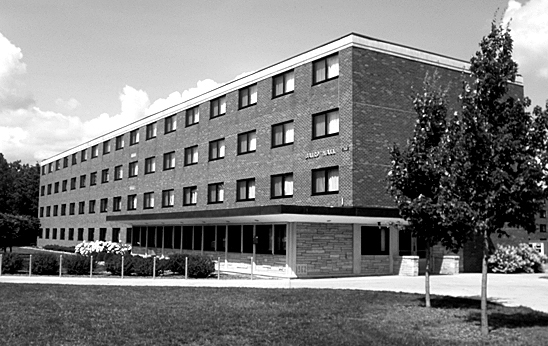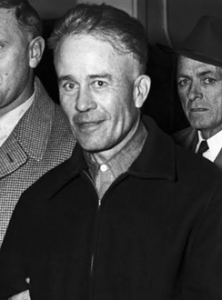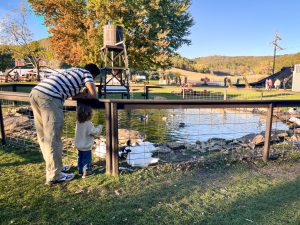Namesake buildings torn down, four women’s stories forever remembered

Photographed is Baird Hall, one of the three demolished residence halls.
November 14, 2018
The University of Wisconsin-La Crosse was founded in 1909 and it is clear to say that many changes have taken place since then. Many students on campus now may not be familiar with the names Wilder, Trowbridge and Baird. However, these three buildings used to be used as residence halls and offices before Eagle Hall and Centennial Hall were built.
Students who live in Eagle Hall may have seen the plaques on the wall within the hallway leading to the Gray side. These plaques were put up specifically to honor the stories of the people whom the now-demolished buildings were named after.
Baird Hall, opened in 1963, was named after sisters Beatrice and Betty Baird. Both of these women taught physical education at UWL. At first, the building only recognized Betty Baird, due to her “great courage in adversity.” However, after the death of her sister, UWL discussed adding Beatrice to the building as well. This was because of both of their outstanding ability to educate and mentor students at UWL.
Trowbridge Hall, opened in 1960, was named after Myrtle Trowbridge. She was a professor of history until 1954. The plaque described that she traveled very often and implemented this diverse knowledge into her lectures and teachings. The building was named after her due to her effective and valuable service. Both this building and Baird Hall were torn down to make room for Centennial.
Wilder Hall, opened in 1952, was named after Emma Lou Wilder, who also taught physical education at UWL. Before her death in 1980, Wilder helped find the La Crosse State Teachers College Foundation and earned the UWL Athletic Merit Award. Although originally used as a dormitory, Wilder Hall later moved to house many offices and academic support units. In 2009 the building was torn down.
Assistant Director of Resident Life for Staffing, Training and Development Patrick Heise went to school at UWL while these buildings were still in use. Although he did not actually live in Baird or Trowbridge, he remembers a lot of information about the rich history of these buildings.
Heise, describing the buildings, stated, “Trowbridge and Baird probably had about 220 students in each building. I knew classmates that lived in those buildings and I went into them. Trowbridge was almost identical to what White Hall looks like. Just one long hallway with rooms. Baird looked like that too. Both of them really mimicked White; four floors high. They were all built around the same time, so you can really see the similarities between each of these buildings. It wasn’t until Laux and Wentz were built that they started to go for another look.”
Now, taking two residence halls down clearly posed a difficulty as far as space went. Heise explained, “Those students [living in Baird and Trowbridge] could no longer live on campus, so that reduced the amount of returning students that could live on campus again due to the fact that these two came down before Eagle was built.”
Heise went on to describe why these buildings were torn down, “These three buildings were all paid for, meaning there was no debt that was owed on them. That is a big advantage for the campus. For instance, part of our budget right now still pays for Eagle and Reuter’s debt. That is one reason why we tore them down because we didn’t have to pay anything else on them.”
He included, “I think each Chancellor wants to make their mark. What a wonderful thing for a building to be designed and built while you are leading the campus. That was a huge deal. And these buildings were old. I mean, you see the older ones now. There is still a lot of renovation that still needs to occur.”
He added, “Also, there was a huge need for more classrooms once the amount of students increased. Centennial was necessary to accommodate for those needed rooms.”
However, making the decision to tear down three very historical and important buildings could not be done without a little bit of backlash. Heise reported, “A big reason why people didn’t want them torn down was because these buildings were located at the heart of the campus. That is very convenient for students. Think about where Centennial is located now and think about how close people were to the academic buildings. Also, like I mentioned before, if you tore down those buildings, less students would be able to live on campus.”
Many photos of these buildings and the students who lived in them can be found within the Murphy Library’s Special Collections. Although Eagle and Centennial have taken their places, Wilder, Trowbridge and Baird remain to be a significant piece of history at UWL.





